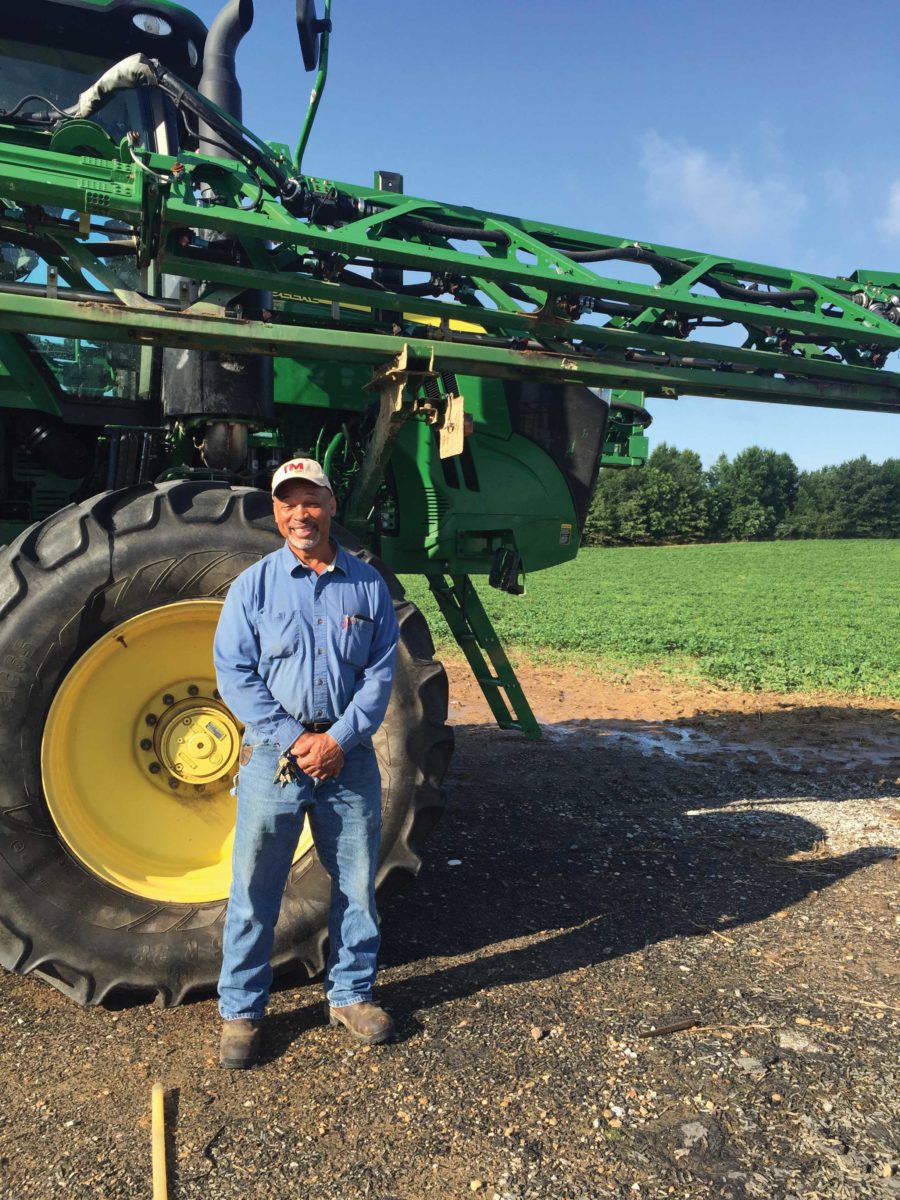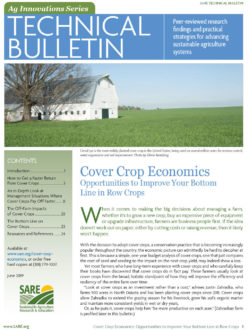
Tennessee farmer Ray Sneed plants a five-species cover crop mix to accomplish multiple management goals, in particular to control weeds and improve irrigation efficiency. Photo by Pete Nelson, AgLaunch Initiative
When it comes to making the big decisions about managing a farm, whether it’s to grow a new crop, buy an expensive piece of equipment or upgrade infrastructure, farmers are business people first. If the idea doesn’t work out on paper, either by cutting costs or raising revenue, then it likely won’t happen.
With the decision to adopt cover crops, a conservation practice that is becoming increasingly popular throughout the country, the economic picture can admittedly be hard to decipher at first. This is because a simple, one-year budget analysis of cover crops, one that just compares the cost of seed and seeding to the impact on the next crop yield, may indeed show a loss. Yet most farmers who have long-term experience with cover crops and who carefully keep their books have discovered that cover crops do in fact pay. These farmers usually look at cover crops from the broad, holistic standpoint of how they will improve the efficiency and resiliency of the entire farm over time.
“Look at cover crops as an investment rather than a cost,” advises Justin Zahradka, who farms 900 acres in North Dakota and has been planting cover crops since 2011. Cover crops allow Zahradka to extend the grazing season for his livestock, grow his soil’s organic matter and maintain more consistent yields in wet or dry years.
Or, as he puts it, cover crops help him “be more productive on each acre.” (Zahradka’s farm is profiled later in this bulletin.)
Every business-savvy farmer knows that some purchases cannot be evaluated solely on their first-year financial impact. Buying new farm machinery or applying lime to acidic soils are typical examples of purchases that come with longer pay-back periods. Similarly, crop insurance seldom pays for itself the year it is bought. In the same manner, because cover crops gradually improve soil health and the productivity of fields, their economic value is best understood over a multi-year period.
Under circumstances where cover crops are the only change made to farm management, it can take a few years for cover crops to fully pay for themselves. But, as farmers gain experience and expand the number of fields that are cover cropped, they find a variety of ways to accelerate the return on their investment. In some situations, cover crops can provide a positive return in the first year or two of use.
Cover crop acreage increased 50% nationally from 2012 to 2017.
This bulletin will describe seven specific situations in which the profitability of cover crops can be accelerated. These situations reflect both common production challenges that row crop farmers face (for example, herbicide-resistant weeds) and opportunities (for example, the transition to no-till). Much of the baseline economic information that underlies the financial analysis of these situations derives from five years of data from the National Cover Crop Survey conducted by SARE and the Conservation Technology Information Center (CTIC) for the 2012–2016 growing seasons. Farmer profiles share real-world examples of how the multifaceted benefits of cover crops translate into profitability. "
Three key takeaways on cover crop economics have become clear through our analysis:
- A thorough evaluation of cover crop economics looks at the overall changes farmers typically make to crop management over a multi-year period of using cover crops. Farmers who are most satisfied with their return on investment take a holistic look at how they manage their overall cropping system and often make a suite of changes that improve overall efficiency, rather than alter just one practice (such as planting a cover crop).
- In most cases, farmers need to use a multi-year timeline to evaluate the return from cover crops, much as they would for applying lime or buying equipment. While an economic return can come relatively quickly in certain situations, such as when using cover crops for grazing or to control herbicide-resistant weeds, the maximum return will build steadily over several years as the soil improves and as the farmer gains experience incorporating cover crops into their overall system.
- One of the most-often-cited economic benefits of cover crops by experienced users is their impact on the resiliency of the cropping system. Farmers are finding that by helping to minimize drought-related yield losses or sometimes allowing earlier planting in a wet spring, cover crops serve as a type of crop insurance. As with ordinary crop insurance, the premium you pay for cover crops will pay off big in some years, but not every year.
